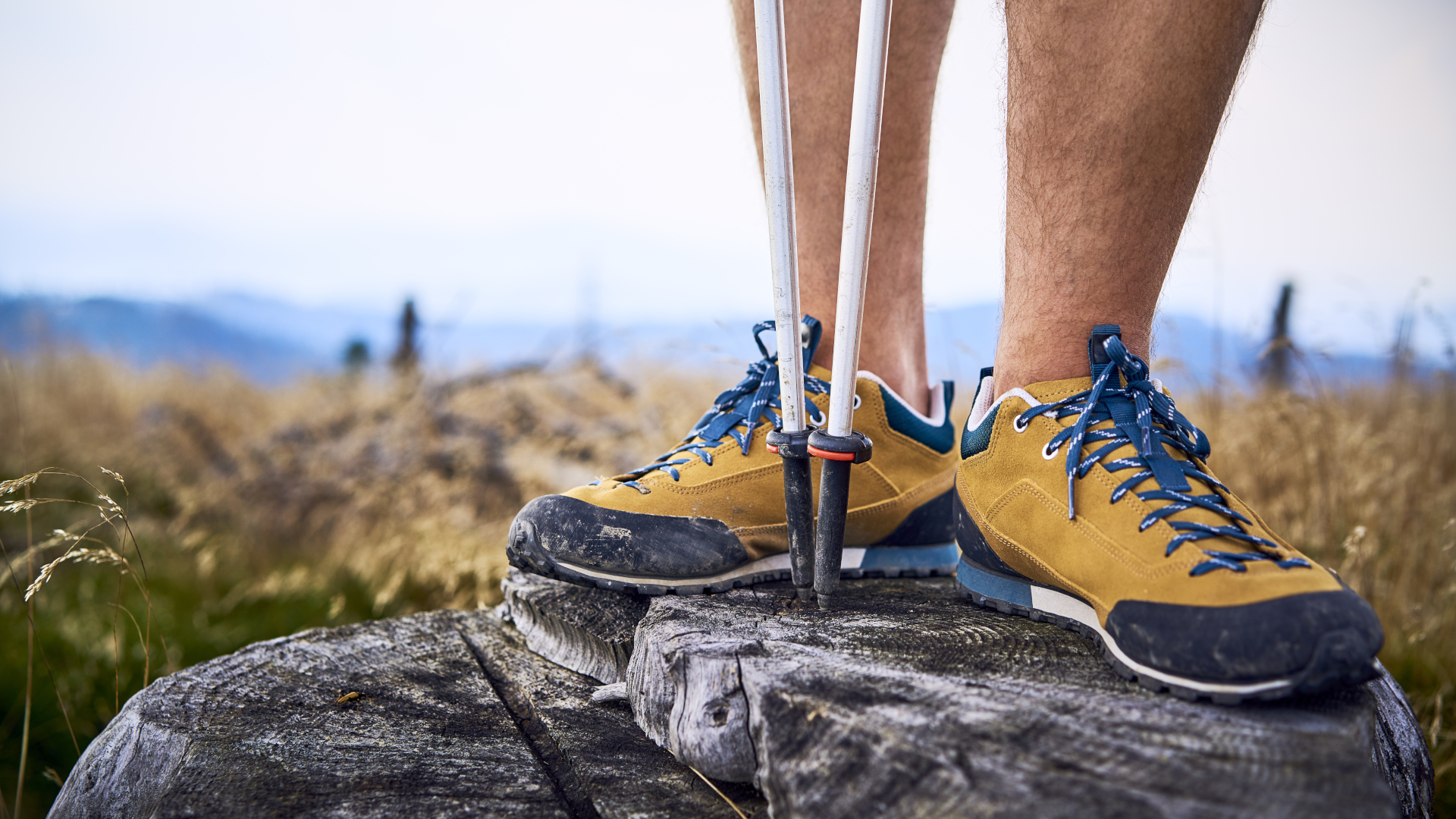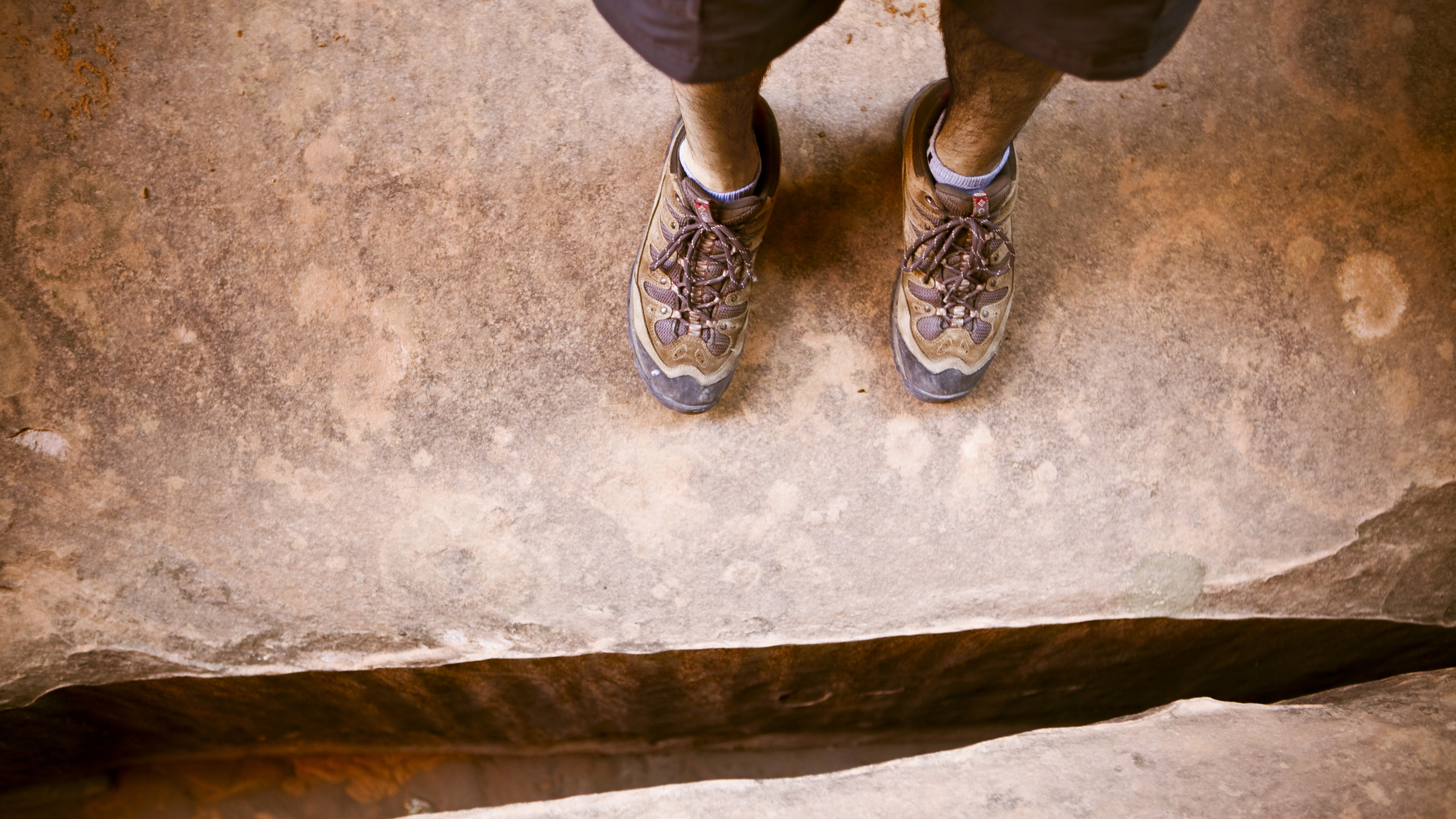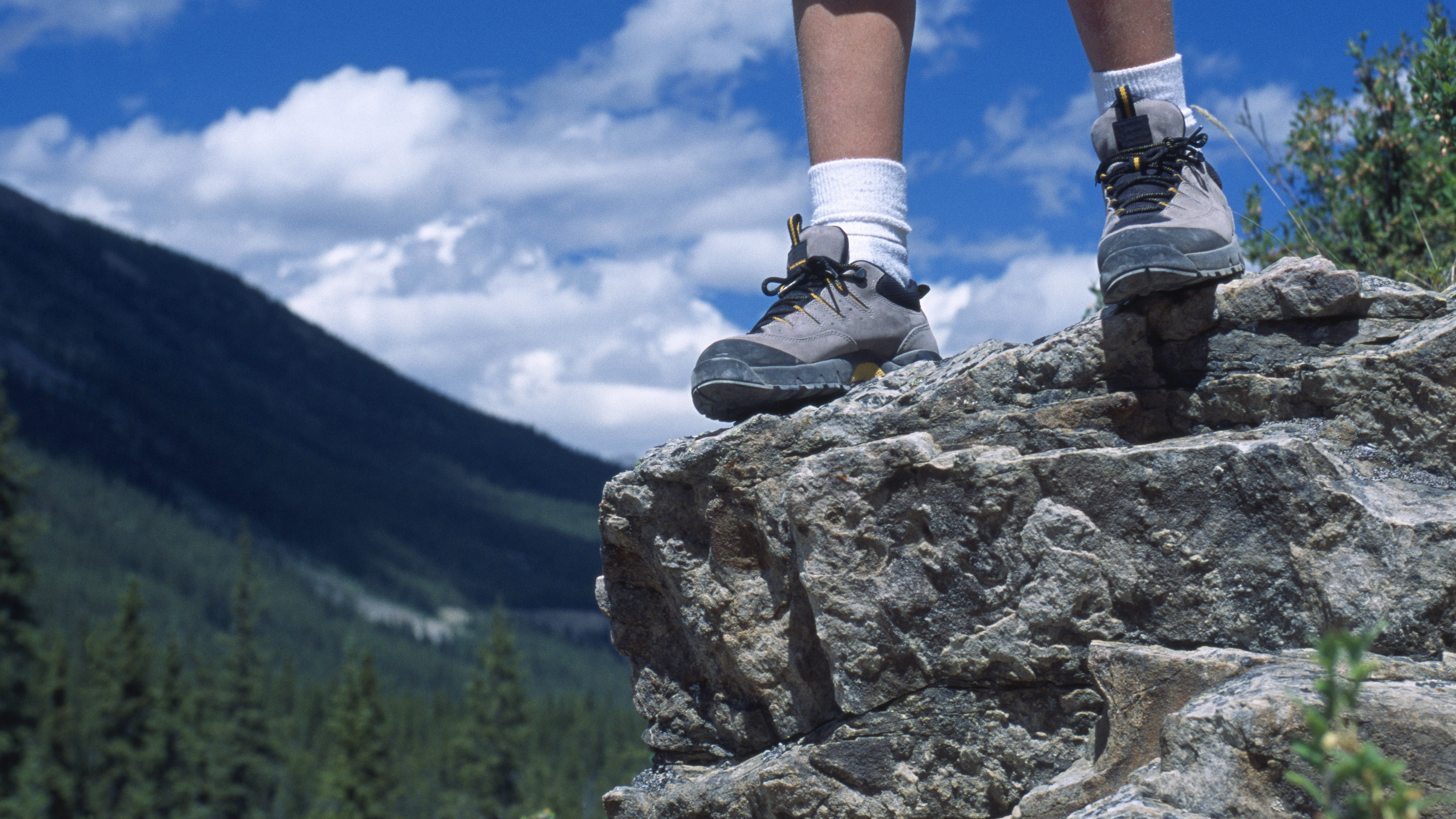Approach shoes vs hiking shoes: which are the best choice for your adventures?
We weigh up the battle of approach shoes vs hiking shoes and consider the advantages and disadvantages of each choice

In the battle of approach shoes vs hiking shoes, which comes out on top? One is basically a lightweight, stripped back hiking boot, ready to take you across the wilderness in comfort. The other hails from the rock climbing world, yet looks much more like a hiking shoe than a climbing shoe.
These days, there's a significant amount of overlap between the two, with some of the best hiking shoes borrowing features from approach shoes and vice versa. Knowing what is best for your adventures can be tough, that's why we're pitching them against each other in the grand battle of approach shoes vs hiking shoes.

What we do know is that both are lighter alternatives to a full-on hiking boot. Designed for comfort over many miles and the ultimate protection against rugged terrain, hiking boots are ideal for those carrying substantial weight for extended periods across the backcountry.
However, for those wearing a daypack rather than a fully loaded hiking backpack, hiking shoes or approach shoes may be more appropriate. It really comes down to the technicality of the trails you are looking to hit. Are you going to be doing a lot of rocky scrambling, or are you going to be pounding well-trodden trails all day? However, before we get into all of that, let's break down exactly what approach shoes and hiking shoes are...
Approach shoes vs hiking shoes: What are approach shoes?
Rock climbers are often on trails that have more ‘technical’ approaches: steep, rocky, precarious and (sometimes) downright dangerous. The Five Ten 5.10 Guide Tennie was designed for this terrain. In fact, some approach shoes are so good that many climbers will use them instead of climbing shoes (which are fitted super tight and often quite unpleasant to wear, let alone walk in) on easy crags, as they’re so much more comfortable.
In the same way that racing cars use softer rubber compounds on their tyres to stick to the race track, climbing shoes use softer rubber compounds, allowing significantly more friction between the shoe and the rock, enabling a better cling-on factor. Most approach shoes use similar ‘sticky’ rubber to climbing shoes, providing more security and confidence on the rock, where the harder rubber compounds of hiking shoes, designed more for durability, will often slip or skid.

The other big difference between the Guide Tennie and most hiking shoes is the aggressiveness of the lugs on the sole. The Guide Tennie has a dot pattern on the base, closer to the smooth sole of a climbing shoe, rather than the deep lugs of a hiking shoe, which are designed for grip on muddy trails. Many approach shoes also have a protective rubber rand, which provides friction and prevents wear when jamming the shoes into cracks in the rock.
All the latest inspiration, tips and guides to help you plan your next Advnture!
Finally, while there is wide variation across models, some approach shoes will be stiffer for what climbers call ‘edging’ – a rock climbing term for standing on small footholds in the rock – while others will be softer, more suited to what climbers call ‘smearing’ – trusting your weight to standing on the ball of your foot and relying on the friction between the rock and the rubber to hold you.
These days there are many more approach shoe brands and models available than the Five Ten Guide Tennie, and they exist on a continuum between shoes that are much more focused on the climbing part of the approach and those that are more ‘all-rounders’, designed with hiking in mind.
What are hiking shoes?
For most people, hiking shoes are much more familiar than approach shoes. Put simply, they sit somewhere between a traditional hiking boot and a trail-running shoe.
Hiking shoes are lower cut and less stiff than hiking boots, while still being hard-wearing and having soles that offer good grip on slippery terrain, and usually, they have a reinforced toe box, to protect your pinkies. While heavier and more durable and protective than trail-running shoes, they are much lighter and cooler to wear than full-on hiking boots, but of course, they don’t offer the ankle support that a higher collar provides.
These days there is huge variation in the models of hiking shoes; some are much stiffer and more rugged, more on the hiking boot end of the spectrum, while others are lighter and more flexible, more akin to a trail running shoe. The great contest that is hiking shoes vs trail running shoes rages on; for a lot of people, it just comes down to personal preference. There are also many varieties of vegan footwear in the hiking market and let's not also forget the best water shoes, which are designed to grip and protect your feet effectively underwater.
And then, photobombing the family portrait, you have the approach shoe.

How do hiking shoes and approach shoes compare?
The range of both approach shoes and hiking shoes is so wide now that there are approach shoes that are much more like hiking shoes, and hiking shoes that veer more towards approach shoes in their design and features. But there are some sweeping generalisations that we can make:
Grip
Approach shoes will be much better when you’re on rock surfaces than hiking shoes, this is because they have much stickier rubber and less aggressive lugs that allow you to get more rubber on the rock – and more rubber means more grip. Conversely, most approach shoes won’t perform as well on muddy trails as hiking shoes, which have soles with deeper lugs designed for grip in the mud.
Durability
Approach shoes, because of the softer rubber compounds used, won’t last as long as hiking shoes, which feature harder rubber compounds that are specifically designed to be more durable. However, some approach shoes are designed so that you can resole them, similar to climbing shoes, which also wear out quickly but can also be easily resoled. Hiking shoes are generally very durable and long-lasting, designed as they are for wet and muddy trails, and soled with heavier wearing rubber.
Weight
It’s a bit hard to generalise about weight, but most approach shoes tend to be a bit lighter than the majority of hiking shoes, which are designed for heavier trail wear. The weight of both approach shoes and hiking shoes varies a lot, and there are very light and much heavier models of each, depending on what they’re designed for. Many approach shoes tend to be lighter, as often climbers will clip them to their harness (they've usually got fabric rings designed specifically for this) to carry on long multi-pitch trad climbing days, but there also some models that are designed for carrying heavier loads into the mountains that would be too heavy to carry on a harness.
Stiffness
Once again, it’s very hard to generalise about the stiffness of approach shoes versus hiking shoes, as it varies so much across models. Many approach shoes have a reasonable amount of rigidity across the sole as that helps with edging on small rock footholds, but it does vary considerably. Most hiking shoes are pretty supportive, so they probably are generally stiffer than your typical approach shoe.
Waterproofness
Approach and hiking shoes are only waterproof if they come with some kind of waterproof lining like Gore-Tex or equivalent. Many approach shoes don’t have waterproof linings as climbers generally only rock climb when the weather is fair.

How do you choose what to buy?
As usual, what you choose to buy probably comes down to what you intend to do. If you’re a rock climber and you love to spend your time in precarious rocky places, then the extra confidence and surefootedness of wearing approach shoes makes a lot of sense. If you’re a hiker who likes to do a bit of scrambling, then the extra security and performance of approach shoes on more technical ground could be a big advantage. If, however, you spend most of your time on typical hiking terrain, then hiking shoes will almost certainly last longer and provide more grip and support on wet and muddy terrain.
